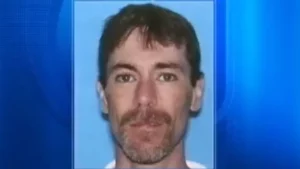Ronnie Johnson Murder – Welcome to the riveting true crime story that unfolds in the heart of Florida, featured in the AMC+ series ‘True Crime Story: Citizen Detective.’ In this episode, titled “Deb and Judy,” we delve into the tragic case of Ronald ‘Ronnie’ Johnson, a topic that exposes the unyielding determination of a mother to seek justice for her son. This compelling episode is an emotional rollercoaster, unraveling the mysteries surrounding Ronnie Johnson’s murder, its shocking aftermath, and the relentless pursuit of truth.
Airing on the AMC+ network, ‘True Crime Story: Citizen Detective’ takes viewers on a journey through true crime cases, offering a close-up view of the intricate investigative work carried out by ordinary citizens. The show captures the essence of our innate need for justice and the relentless pursuit of the truth.
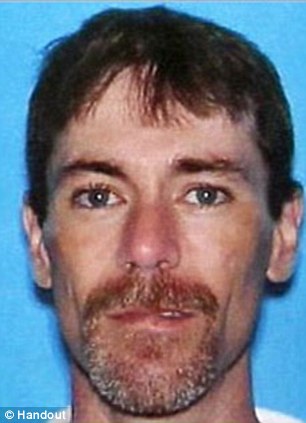
Ronnie Johnson’s Murder Story
Ronald ‘Ronnie’ Johnson’s story is both heart-wrenching and enigmatic. At the age of 34, Ronnie was making efforts to turn his life around after battling personal struggles with drug abuse. He had moved into his mother Judy’s home in Orlando, Florida, with the hope of a fresh start. However, a seemingly ordinary decision changed everything.
On the rainy evening of June 27, 2005, Ronnie stepped out to purchase a pack of cigarettes, but he never returned home the same. Hearing sirens just 15 minutes later, Judy had a gut feeling that something was terribly wrong. Rushing to the scene on Raeford Road in the Conway area, she discovered her son being rushed to the hospital.
Initially, the story painted a picture of a tragic accident where Ronnie had fallen off his bicycle, suffering a head injury. This narrative was supported by nearly every witness present. Yet, Judy’s maternal instincts told her something was amiss. Ronnie’s bicycle was nowhere to be found, casting doubt on this version of events. Medical reports confirmed two separate head injuries that had a severe impact on Ronnie’s brain function, leaving him in a vegetative state.
On July 6, 2005, Judy made the heart-wrenching decision to remove her son from life support, surrounded by her family. Initially classified as an accidental death by a medical examiner, Judy’s unwavering belief in her son’s innocence led to a second autopsy, revealing that Ronnie’s death might have been a homicide.
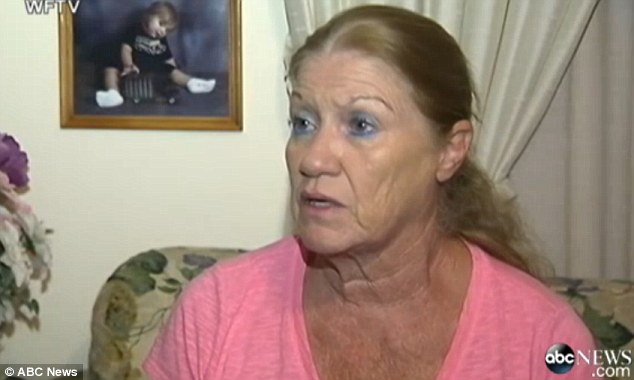
Investigation and Arrest – How Did Ronnie’s Mom Solve the Case?
The initial reports and autopsy results marked Ronnie’s death as accidental, leading the local Orange County Sheriff’s office to conduct limited investigations. However, Judy, along with her elder sister Deborah, refused to accept this outcome. They embarked on their journey to uncover the truth and ensure justice for Ronnie.
Judy’s quest for answers led her to approach potential witnesses on Raeford Road. She cleverly conveyed that Ronnie was on the path to recovery, a white lie aimed at coaxing people to talk. Meanwhile, Deborah scoured the internet for any leads that might have been overlooked.
Their relentless pursuit bore fruit when Ronnie’s bicycle mysteriously reappeared outside Judy’s home one night without a single scratch. This development strongly contradicted the notion of a bike accident. Additionally, a man named “Jay” surfaced, visiting Judy and revealing unsettling information about Ronnie’s fate. Jay admitted to slapping Ronnie and even brandished a gun permit, seemingly to intimidate Judy.
Despite Judy’s best efforts to report this information to the local police, it appeared that they were not willing to allocate resources to investigate an “accidental” death involving a drug addict. Undeterred, Judy and Deborah pressed on with their inquiries.
As the pieces of the puzzle started to fall into place, it was revealed that the mysterious man who went by the name “Jay” was, in fact, Jason Brian Gailey, and he lived in the same house near where Ronnie was found. Determined to uncover the truth, Judy continued to question those with knowledge of the incident.
A crucial breakthrough came when a mailman disclosed that Ronnie’s death was indeed a homicide. According to his account, Ronnie had confronted Jason, who was brandishing a gun during a dispute over money. Ronnie had intervened in defense of an older man, resulting in a violent altercation. Jason struck Ronnie over the head with the butt of his weapon, causing his first traumatic injury. The second fatal blow occurred when Ronnie fell to the ground, hitting his head on the concrete pavement, leading to profuse bleeding.
At this point, Jason, fearing the consequences, brought Ronnie inside the house, cleaned him up, and warned everyone against speaking out or contacting the police. Nevertheless, one person defied the threat, took Ronnie’s bicycle, and made the fateful call to 911. This explained the bike’s initial disappearance.
Shockingly, when first responders arrived at the scene, Ronnie was still inside Jason’s home. This gave credence to the accidental death narrative. Judy firmly believes that if any officer had questioned these witnesses on the same night, the truth would have surfaced. Sadly, this was not the case, and the case remained unsolved.
The most heart-wrenching part of this story is that, even after the cause of death was revised to a possible homicide, no other officer heeded Judy’s pleas in the following years. That is until the original lead officer, by chance, met Judy in the restaurant where she worked and heard her story.
Unbeknownst to Judy, she was speaking to the same officer who had been involved in the case seven years earlier. Moved by her determination and the compelling evidence she presented, he realized that he had failed to act in 2005. He promptly apologized for his oversight and initiated contact with his colleagues at the cold case unit.
Two skilled detectives were handpicked to reinvestigate the case, and they reached out to Judy. Their inquiries led them to several witnesses who willingly shared the true version of events, ultimately incriminating Jason Gailey. This breakthrough resulted in Jason’s arrest in September 2013.
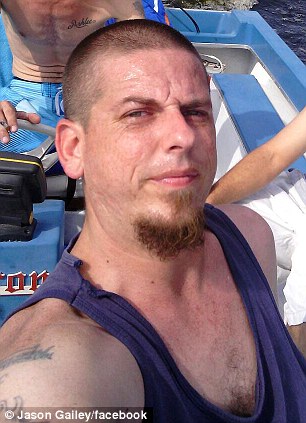
Trail and Prosecution
With Jason Gailey in custody, the case was brought to trial. The courtroom became the stage for justice to be served and the truth to prevail. Detective Michael Kispert of the Orange County Sheriff’s Office shed light on the challenges they faced when dealing with Ronnie’s case, stating, “The family could not and would not accept that Johnson’s death was an accident.”
The court trial unfolded, with the judge and the prosecution presenting a compelling case against Jason Gailey. Witness testimonies and forensic evidence painted a vivid picture of the events that transpired on that fateful night in 2005.
The prosecution argued that Jason Gailey, in a fit of rage, had struck Ronnie in the head with a handgun when he attempted to intervene in a dispute between Jason and another man known as Harry ‘Cowboy’ Taylor. This vicious blow caused Ronnie to fall to the ground, with his head impacting the concrete, leading to fatal injuries.
One critical witness, who had remained silent for years, had suffered a stroke during the intervening time. This health scare compelled him to come forward with the truth, believing that he owed it to himself and his family. This witness’s testimony played a pivotal role in unraveling the mysteries surrounding Ronnie’s death.
As the trial progressed, the witnesses who had initially claimed that Ronnie’s death resulted from a bike accident changed their stories. The truth began to surface, and justice was finally within reach. The court proceedings were a testament to the power of perseverance and the unwavering determination of a mother, Judy Weaver, to seek justice for her beloved son.
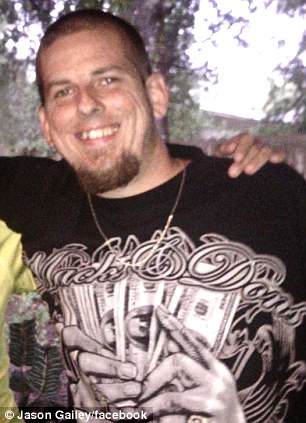
How Did Killer Jason Brian Gailey Die?
After being charged with three counts related to second-degree murder, Jason Brian Gailey faced the legal consequences of his actions. However, the legal journey took an unexpected turn. The prosecutor’s office decided not to proceed with the case in court, citing concerns about the reliability of witnesses with questionable backgrounds eight years after the incident.
Jason Gailey, having been released from county jail in late 2014, faced a different fate shortly after that. On December 7, 2014, just a week after his release, he tragically succumbed to an accidental drug overdose. He was 34 years old at the time.
The circumstances surrounding Jason Gailey’s death serve as a reminder of the complexities and uncertainties in the pursuit of justice. While he had been arrested and charged with the murder of Ronnie Johnson, the legal system’s intricacies and the challenges of witness credibility led to a decision not to proceed to trial.
In the end, the story of Ronnie Johnson’s murder is a testament to the unwavering determination of a mother, Judy Weaver, who refused to accept an incomplete investigation and fought tirelessly for justice. It is a story of how, through perseverance and the pursuit of the truth, justice can ultimately be served, even if the legal path takes unexpected turns.
The world is undoubtedly a safer place with Jason Gailey no longer on the streets. Ronnie’s legacy lives on, and his story serves as a powerful reminder that justice can be achieved when individuals refuse to give up in the face of adversity.
In conclusion, the tragic tale of Ronnie Johnson’s murder, as featured in AMC+’s ‘True Crime Story: Citizen Detective,’ showcases the strength of a mother’s love and the power of perseverance. It reminds us that even in the most challenging circumstances, the pursuit of justice can ultimately prevail.
Also Read: Who Is Chad Austin? What Happened To Bank Robber?

